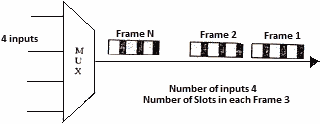Verify Boxnut 's comments. I think there is a lot of mis-information contained in the https://www.electro-tech-online.com/threads/how-do-tv-sub-channels-work.159659/post-1384478 post.
We still have physical channels and we have virtual channels under ATSC. The number of channels has been reduced from the early NTSC VHF and UHF assignments primarily for cellular. In many markets VHF has been dropped from ATSC markets.
The information is digital and thus it's all or nothing. You can't ask for a re-transmit of a bad packet.
They claim that ATSC-3 will essentially have IP addresses. https://www.thebroadcastbridge.com/content/entry/6229/atsc-3.0-details-explained-part-4
In ATSC-2 what's very important is the TSID or Transport Stream ID. For every "antenna" or region, like MAC addresses, they are unique numbers. It's important to have that so your tuner has a unique ID for each transport stream. I think you could have a digital channel 2-1 from Philadelphia and digital channel 2-1 from Baltimore and the tuner could figure that out.
We still have physical channels and we have virtual channels under ATSC. The number of channels has been reduced from the early NTSC VHF and UHF assignments primarily for cellular. In many markets VHF has been dropped from ATSC markets.
The information is digital and thus it's all or nothing. You can't ask for a re-transmit of a bad packet.
They claim that ATSC-3 will essentially have IP addresses. https://www.thebroadcastbridge.com/content/entry/6229/atsc-3.0-details-explained-part-4
In ATSC-2 what's very important is the TSID or Transport Stream ID. For every "antenna" or region, like MAC addresses, they are unique numbers. It's important to have that so your tuner has a unique ID for each transport stream. I think you could have a digital channel 2-1 from Philadelphia and digital channel 2-1 from Baltimore and the tuner could figure that out.



